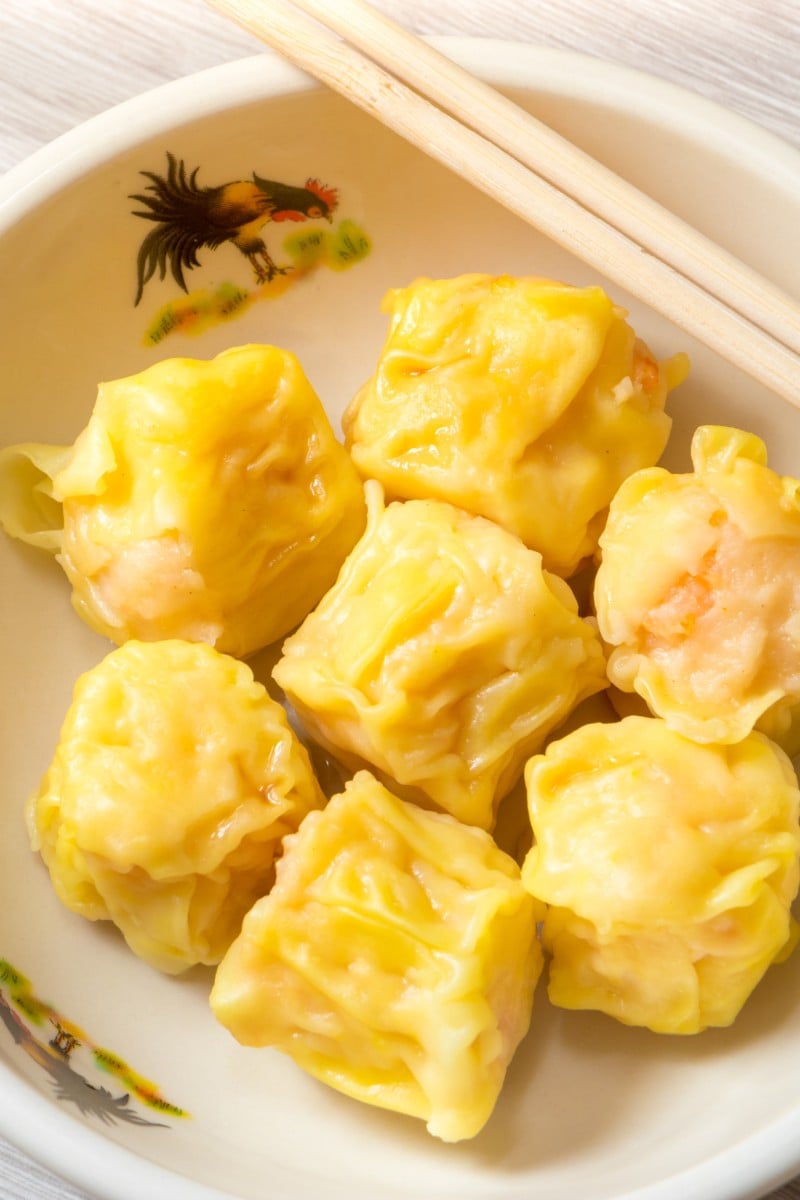
What’s our street food made of? A nutritionist’s take on Hong Kong’s beloved snacks – curry fish balls and siu mai
- Walk down any street in the city and you’ll find a vendor selling these iconic street foods, but are they good for you?
- Moderation is the key to enjoying these local delights
 We don’t have anything to say besides “Mmmmmm.”
We don’t have anything to say besides “Mmmmmm.”Take a short walk anywhere in Hong Kong, and it’s almost impossible not to run into a stall selling curry fish balls and siu mai, the popular steamed dumpling usually made with pork, shrimp, mushroom or fish paste.
But how nutritious are they? Michelle Lau, a registered dietitian nutritionist and founder of nutrition consultancy Nutrilicious, told Young Post all about our favourite snacks.
Which weird TikTok food trends could leave you in a pickle?
Curry fish balls
An iconic Hong Kong street food, curry fish balls are cooked in an aromatic sauce and served on a skewer.
Originally from the Chiu Chow and Fujian provinces, fish balls have been a popular dish in Southern China since the Qing dynasty. In Hong Kong, these delectable, bouncy snacks were originally served Chiu Chow style – white, boiled and in noodle soup. The dish eventually took on its own unique personality when local hawkers began serving them with curry sauce.
In the past, fish balls were made of fish that were once widely available in Hong Kong waters. It created the unique taste, elasticity and tenderness of the fish ball.
These days, most fish ball manufacturers use surimi – a fish paste consisting of cheap fish such as pollack – as well as sugar and chemical enhancers. These are then sold to street food vendors who drizzle their in-house curry sauce over the fried fish balls.
But how do curry fish balls fit into our diet?
Fish is an excellent source of high quality protein and omega-3 fatty acid, which helps lower the risk of heart disease and stroke. It also contains iodine, selenium, calcium, iron and vitamins A and D.
Hong Kong’s favourite street foods and the stories behind their names
Every 100 grams of fish balls – about 10 pieces – contain 130 calories, 16 grams of carbohydrates, 8.7 grams of protein and 2.8 grams of fat. But the curry sauce adds quite a bit more sodium, calories and fat.
However, it isn’t all bad if the curry is prepared with a generous amount of turmeric – a yellow spice packed with curcumin, a powerful antioxidant with anti-inflammatory properties that aid digestion and promote heart health.
How to order street food like a local
Siu mai
Let’s move on to the quintessential street food version of a dim sum favourite – fish siu mai.
There are different varieties of siu mai around the world, with each of them adopting different meats and spices. According to several historical records, siu mai originated from Hohhot, the capital of the Chinese autonomous region of Inner Mongolia. They were staples at tea joints where travellers crossing the Silk Road would grab one or two to pair with a hot mug of Mongolian milk tea. The snack became so popular that they were all snapped up, and thus were named “siu mai”, meaning “hot items”.
In Hong Kong, some vendors like to deep-fry them and sprinkle salt and pepper on top. Siu mai usually have a chewy filling made of a blend of pork and fish, which is encased in a yellow wrapping. It can be easy to polish off a seven-piece serving of these bite-sized delights in one go.
The dish contains a high amount of salt, sugar, as well as colouring, flavourings and emulsifiers. Seven pieces would add about 300 calories to your daily intake.
While it seems like these snacks are sure to wreak havoc on your health, don’t put them off just yet.
Say it like a pro at the cha chaan teng
The secret to enjoying them is portion control. Instead of cleaning off an entire bowl of six curry fish balls, have three pieces and go easy on the curry. Then, save the fish siu mai for another day.
Bear all these things in mind, and you can still enjoy these delicious street foods without worrying about how it will affect your health.
Click here to download a printable worksheet with questions and exercises about this story. Answers are on the second page of the document.
